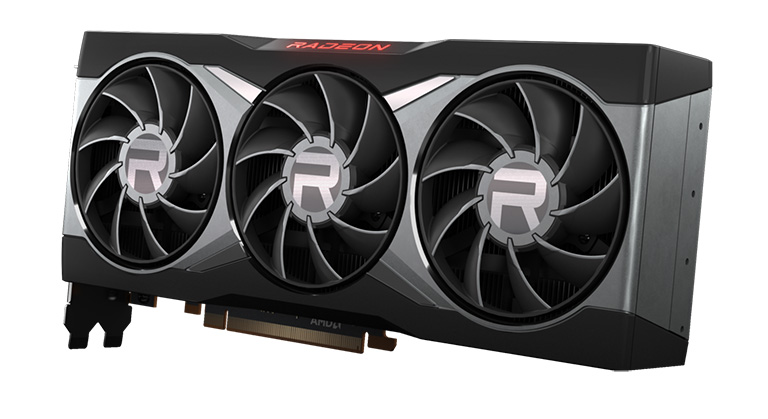Conclusion
...AMD must be congratulated on extracting a heck of a lot within a limited time frame.AMD's GPU engineers and architects had the tough remit of doubling the performance of last-generation RDNA graphics without the benefits of a process node shrink and grounds-up redesign. To achieve this goal without excessive board power, performance-per-watt had to be improved by over 50 per cent, which was no small feat.
Big Navi achieves this lofty aim by incorporating a number of smarts into a base architecture that's not much different from RDNA 1. Higher frequencies and smoother pipelines certainly help, but the key contributor to the all-important performance-per-watt metric is the introduction of Infinity Cache, which takes much of the focus and power off the board memory subsystem. Clever.
The net result of these changes is performance that is indeed up to twice the previous generation, so AMD must be congratulated on extracting a heck of a lot within a limited time frame. Putting numbers into real-world context, the Radeon RX 6800 XT is about as fast as Nvidia's admittedly impressive RTX 3080. RX 6800, meanwhile, improves upon the RTX 3070's numbers by 10 per cent or so. AMD stands tall against Nvidia's flagship GPUs of 2020.
Framerates are such that both of these new Radeons can be considered excellent rasterisation solutions at QHD and, mostly, at UHD, which is not something we've been able to say before. Smart Access Memory helps boost framerates further when used alongside Ryzen 5000 Series CPUs, and recommended pricing is competitive against the green team's premier solutions. Putting another tick in the positive column is the heightened build quality and quiet operation of reference cards.
One can infer that being in both the latest-generation consoles with derivative RDNA 2 architectures can only help these and future Radeons do well in big-name ports. Content is king, after all.
Yet it is not all good news. AMD's hardware-based ray tracing capabilities are about half that of Nvidia RTX, there's no current competitive solution to GeForce's framerate-enhancing DLSS or Broadcast streaming technologies, and we expect there to be a severe shortage of stock today, pushing up pricing of the few available units.
It was wishful thinking to presume Radeon would demolish GeForce in the premium end of the market. RX 6000 Series ultimately serves as a genuine, viable competitor to RTX's high-end dominance over the last two years.
We feel Nvidia's RTX 30 Series remains the most complete solution right now, but let's make no bones about it, AMD is certainly back in the high-end PC graphics game with Radeon RX 6000 Series. Roll on RDNA 3.
Attractive looks
Lovely build
16GB framebuffer on both
Standard power cables
Quiet and relatively cool
Restrained in form factor
Ray tracing not up to RTX levels
No DLSS-like tech from the off
HEXUS.where2buy
TBC.
HEXUS.right2reply
At HEXUS, we invite the companies whose products we test to comment on our articles. If any company representatives for the products reviewed choose to respond, we'll publish their commentary here verbatim.








